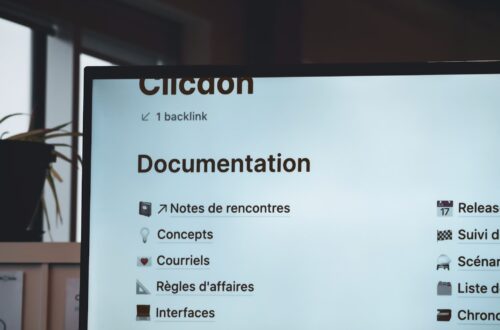It’s one thing to deploy a voice AI system. It’s another to keep it consistently performing after launch.
That’s where most businesses stumble — not in building, but in maintaining.
Think of it like running a fleet of self-driving cars. Each one performs beautifully on day one… until traffic conditions, road layouts, or firmware updates throw it off balance. Your voice AI is no different — a living, evolving system that needs constant tuning, retraining, and monitoring.
In this post, we’ll break down how to keep your voice AI operating at peak reliability — and why long-term maintenance is the silent ROI multiplier every enterprise forgets to plan for.
Why Voice AI Maintenance Isn’t “Set It and Forget It”
Voice systems are dynamic. The language models, APIs, and even customer behaviors they depend on are in continuous flux.
In real-world deployments, voice drift — subtle performance degradation over time — can sneak up on you. Maybe it’s an API latency spike from a cloud provider, or maybe new slang makes your intent recognition stumble. Either way, you lose precision, trust, and conversions.
The best teams treat their voice AI maintenance like DevOps: measurable, proactive, and integrated into their business process.
The Core Maintenance Framework
In my experience, successful enterprises use a three-layer framework for voice AI upkeep:
- Model Health Monitoring – Track accuracy, intent match rate, and response latency.
- Operational Reliability – Monitor infrastructure uptime and resource utilization.
- Continuous Optimization – Retrain, test, and fine-tune models using fresh conversational data.
Each layer feeds into the next. When your monitoring flags a drop in NLU accuracy, optimization loops kick in — retraining with new data while keeping the production model stable.
“We realized maintenance wasn’t about fixing bugs — it was about managing learning.”
— Ananya Gupta, Operations Lead, Fintech AI Platform
In Practice: What Real-World Voice AI Maintenance Looks Like
Here’s a simplified view of what proactive maintenance looks like inside an enterprise setup:
| Phase | Focus Area | Key Metrics | Typical Frequency |
|---|---|---|---|
| Daily | System uptime, latency | 99.9%+ uptime, sub-500ms latency | Continuous |
| Weekly | Intent resolution tracking | Accuracy rate, fallback % | Weekly dashboards |
| Monthly | Model retraining and versioning | Updated training data, bias control | Monthly iteration |
| Quarterly | Compliance and feature audit | GDPR, privacy, and model drift | Quarterly reviews |
These cycles ensure your voice AI doesn’t just work — it learns and adapts.
Preventing the “Performance Plateau”
Every AI system eventually hits a plateau — that point where improvement slows despite more data.
The trick is to refresh context intelligently, not endlessly.
For example, in one deployment we observed that adding 20% more data improved accuracy by only 2%. However, replacing outdated training examples boosted accuracy by 9%. Quality, not quantity, drives long-term stability.
Another overlooked factor: integration stability.
APIs evolve. CRMs like Salesforce and communication platforms like WhatsApp frequently update schemas. Without version control and alerting, small integration mismatches can break key automation flows overnight.
Security and Privacy Maintenance
Voice AI maintenance isn’t just technical — it’s also compliance-driven.
Periodic privacy audits, encryption updates, and user consent validations are essential, especially for regulated sectors like healthcare or finance.
The most mature teams implement automated compliance triggers that alert them when:
- Customer data isn’t being anonymized properly
- Logs exceed retention limits
- A new jurisdiction changes its voice data storage laws
In other words — maintenance is risk management.
Linking Performance to Business Outcomes
The business payoff of proper maintenance is enormous.
A consistent 1-second improvement in voice response time can raise conversion rates by 7–10%.
And companies that retrain quarterly see up to 22% higher NLU accuracy year-over-year.
Maintenance doesn’t just preserve performance — it compounds it.
When everything runs reliably, your customers perceive your AI as smart and trustworthy.
When it doesn’t, they notice — immediately.
That’s why brands serious about scale invest in operational excellence, not just flashy new features.
(Check out how our features are designed to minimize downtime while optimizing continuous learning.)
Key Takeaways: Sustaining Voice AI the Smart Way
- Adopt an Ops Mindset – Treat maintenance as continuous improvement, not repair.
- Automate Monitoring – Build real-time dashboards for latency, uptime, and accuracy.
- Plan Retraining Cycles – Align model refreshes with actual usage trends, not arbitrary timelines.
- Audit Security Regularly – Update compliance and encryption frameworks quarterly.
- Connect Metrics to ROI – Measure how uptime, speed, and reliability impact real business KPIs.
Your voice AI system is a long-term asset.
Treat it like one — not a project that ends after deployment.
Explore how TringTring’s use cases demonstrate real-world reliability across industries, or visit the homepage to learn more about enterprise-grade voice performance management.






